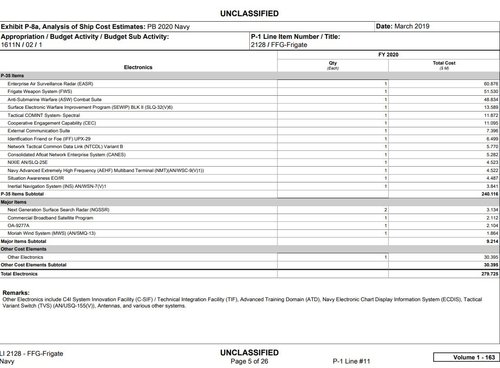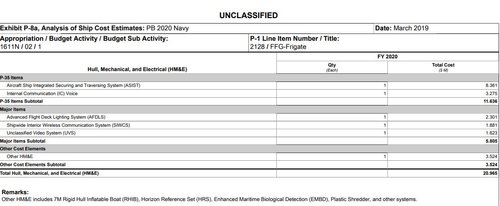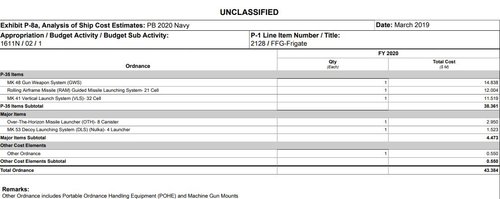Article confirms Esper has essentially shoved the Navy leadership aside from its own force planning, and is pressing ahead with accelerating his Transformationalist vision. Rumsfeld's heir has arrived, it seems.
..was a Transformationalist then wasnt but now would have to be on Transformationalist vision side.
IMHO LCS candidates are barely equipped to be useful though the role is still need in the era of great powers.
Where should a National Security cutter expansion occur. Mostly likely a presence where it is too expensive for a Frigate. Is small USN permanent forward harbor presence in Latin America and other third world countries necessary and or worth it.
Whether Frigate, Destroyer, Cruiser applicability in the modern era is far from resolved in my opinion.
Frigates w/ Hellfires. Hellfires on frigate size combatant in the era of great powers is... (Like using a fly swatter to kill a chicken). Counter-swarm can be done by 57mm w/ Alamo ammo.
Lockheed Martin is a leader in providing vertical launching systems and munitions for the Navy, with products such as the MK 41, the Single Cell Launcher, the Extensible Launching System and the Vertical Launch Anti-Submarine Rocket.

www.lockheedmartin.com
When one is so outnumbered and the situation ever worsening then Ship defenses have to be so powerful as to be like trying catch a porcupine w/ your bare hands. These ship are too small to afford those type of defenses in lengthy high intensity fights. This has been admitted by Naval thinkers.
A baseline for manned
Large combatants should be based on:
1. how many VLS cells ie Hypers, anti-Hypers, Anti-TBM, Anti-Ship missile +missile/torpedo, Anti-Air/Cruise, Anti-Sub, Cruise etc +(yes reintroduced VGAS w/anti-Hypers, Anti-TBM, Anti-Ship, Anti-Air/Cruise, Anti-Sub)
2. how many lg rg UASs are supported
3. how much amphib and basing..including STOVL and helicopters support is provided
Unmanned corvette LUSV should afford support for:
1 Most ASW w/ large combatants only involved self protection ASW not hunting
2 All threat aspect close in protection of Carriers
3 Land atk "mobile magazines"














